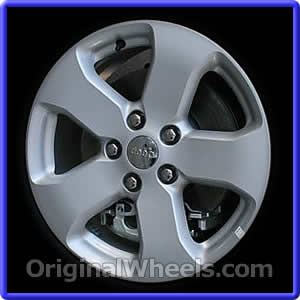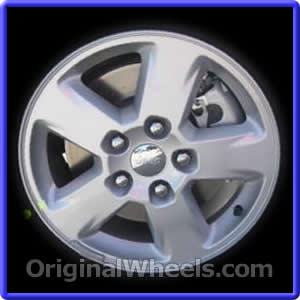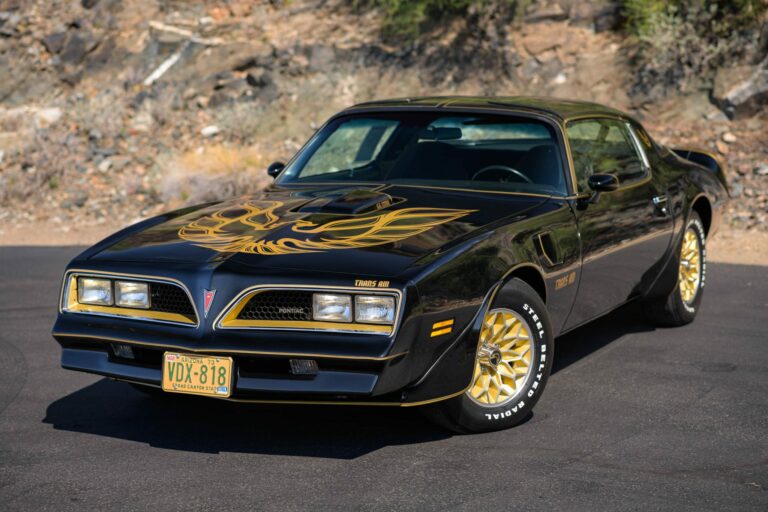2012 Jeep Grand Cherokee Rims: A Comprehensive Guide to Style, Performance, and Practicality
2012 Jeep Grand Cherokee Rims: A Comprehensive Guide to Style, Performance, and Practicality jeeps.truckstrend.com
The 2012 Jeep Grand Cherokee stands as a testament to rugged capability blended with refined comfort. A crucial, yet often overlooked, component contributing to both its aesthetic appeal and functional performance are its rims. Far more than just decorative circles, the rims on your 2012 Grand Cherokee play a pivotal role in handling, safety, and even fuel efficiency. Understanding their specifications, types, and the considerations involved in upgrading or replacing them is essential for any owner looking to maintain, enhance, or personalize their vehicle. This comprehensive guide will delve into everything you need to know about 2012 Jeep Grand Cherokee rims, from OEM specifications to aftermarket options, maintenance tips, and practical advice.
Understanding Your 2012 Jeep Grand Cherokee’s Original Rims
2012 Jeep Grand Cherokee Rims: A Comprehensive Guide to Style, Performance, and Practicality
Before exploring alternatives, it’s vital to grasp the foundational specifications of the original equipment manufacturer (OEM) rims that came with your 2012 Grand Cherokee. These specifications dictate compatibility and performance, ensuring your vehicle operates as intended.
Key OEM Specifications:
- Bolt Pattern: The 2012 Jeep Grand Cherokee (WK2 generation) uses a 5x127mm (or 5×5 inch) bolt pattern. This means there are five lug nut holes, and they are arranged in a circle with a diameter of 127 millimeters. This is arguably the most critical specification, as an incorrect bolt pattern will prevent the rim from physically mounting to the hub.
- Diameter: OEM rims typically ranged from 17 inches to 20 inches in diameter, depending on the trim level. For instance, Laredo models often came with 17-inch or 18-inch wheels, while Limited, Overland, and SRT8 trims featured 18-inch, 20-inch, or even 21-inch wheels respectively.
- Width: Rim width varies with diameter, usually ranging from 7.5 inches to 9 inches. The width must be appropriate for the tire size to ensure proper tire bead seating and optimal contact patch.
- Offset: The offset is the distance from the mounting surface of the wheel to the centerline of the wheel. For the 2012 Grand Cherokee, OEM offsets typically range from +44mm to +56mm. A positive offset means the mounting surface is towards the front (outboard) face of the wheel. Correct offset is crucial for fender clearance, suspension clearance, and maintaining proper steering geometry.
- Center Bore: The center bore is the hole in the middle of the wheel that centers it on the vehicle’s hub. The 2012 Grand Cherokee has a center bore of 71.5mm. It’s important for aftermarket wheels to have a matching or larger center bore. If larger, hub-centric rings are used to ensure a snug, vibration-free fit.

These specifications are the blueprint for any rim you consider for your vehicle. Deviating too much from these can lead to issues ranging from minor rubbing to severe safety concerns.
Why Consider Upgrading or Replacing Your Rims?
Owners choose to replace or upgrade their 2012 Grand Cherokee rims for a variety of reasons, blending aesthetic desires with practical needs.
- Aesthetics and Personalization: One of the primary drivers is the desire to customize the vehicle’s appearance. A new set of rims can dramatically change the stance and overall look of your Grand Cherokee, reflecting your personal style.
- Damage or Wear: Rims can suffer from curb rash, bends, cracks, or corrosion over time. Replacing damaged rims is crucial for safety and performance, as compromised rims can lead to tire leaks, vibrations, or even catastrophic failure.
- Performance Enhancement: Lighter aftermarket rims can reduce unsprung weight, potentially improving acceleration, braking, and handling. Stronger rims are beneficial for off-roading, offering increased durability against harsh terrain.
- Winter/Summer Tire Setups: Many owners opt for a dedicated set of rims for winter tires. This protects their primary rims from road salt and harsh conditions and makes seasonal tire changes quicker and more cost-effective.
- Tire Compatibility: If you plan to significantly change your tire size (e.g., for off-roading or a specific aesthetic), you might need rims of a different width or diameter to properly accommodate the new tires.


Key Considerations When Choosing 2012 Jeep Grand Cherokee Rims
Selecting the right rims requires careful thought beyond just looks. Here’s what to keep in mind:
- Size (Diameter & Width): While staying within OEM dimensions is safest, upsizing (e.g., to 22 inches) or downsizing (e.g., to 17 inches for more sidewall) is possible.
- Upsizing Pros: Improved aesthetics, potentially better on-road handling (with lower profile tires).
- Upsizing Cons: Harsher ride, increased cost, potential for rubbing issues, speedometer inaccuracies (if overall tire diameter changes significantly).
- Downsizing Pros: More comfortable ride, better off-road capability (more sidewall), often cheaper tires.
- Downsizing Cons: Less aggressive look, potentially less precise handling on pavement.
- Actionable Insight: Always check tire clearance with full suspension articulation, especially if going significantly larger. Use online tire/wheel calculators.
- Bolt Pattern (5x127mm): As mentioned, this is non-negotiable. Double-check this specification on any aftermarket rim you consider.
- Offset: This dramatically affects how far your wheels stick out or tuck in.
- Lower/Negative Offset: Pushes wheels further out, creating a wider stance. Can lead to rubbing on fenders, especially with larger tires.
- Higher/Positive Offset: Tucks wheels further in. Can cause rubbing on suspension components or brake calipers.
- Practical Advice: Aim for an offset close to OEM (+44mm to +56mm) unless you understand the implications and are prepared to modify fenders or suspension. Many aftermarket wheels for the Grand Cherokee will have offsets in the +25mm to +40mm range to provide a more flush look without excessive rubbing.
- Center Bore (71.5mm): If an aftermarket rim has a larger center bore, you must use hub-centric rings to ensure the wheel is perfectly centered on the hub, preventing vibrations.
- Material:
- Alloy Rims (Cast, Flow-Formed, Forged): Most common. Lighter, better heat dissipation, wide variety of designs. Cast are cheapest, forged are strongest and lightest but most expensive.
- Steel Rims: Heavier, less aesthetically pleasing, but very durable and often cheaper. Common for winter setups or heavy-duty off-road use.
- Finish: From classic machined and polished to various painted (gloss black, matte black, gunmetal), chrome, or even custom powder-coated options. Choose a finish that complements your vehicle’s color and your personal taste. Consider durability against brake dust and road grime.
- Tire Pressure Monitoring System (TPMS): Your 2012 Grand Cherokee uses TPMS sensors. If you’re getting new rims, you’ll need new compatible TPMS sensors installed or transfer your existing ones. They will likely need to be reprogrammed or "relearned" by the vehicle.
- Load Rating: Ensure the rim’s load rating is sufficient for the weight of your Grand Cherokee, especially if you tow or carry heavy loads.
Types of Aftermarket Rims for Your 2012 Grand Cherokee
The aftermarket offers a vast array of choices, catering to different needs and styles:
- OEM Replicas: Designed to mimic the factory look but often at a lower cost. Great for replacing damaged OEM wheels without breaking the bank.
- Performance Rims: Typically lighter weight (often flow-formed or forged) to reduce unsprung mass, improving acceleration, braking, and handling dynamics. Popular among those seeking a sportier ride.
- Off-Road Rims: Built for durability and strength, often featuring thicker spokes, beadlock-compatible designs (for extreme off-roading), and finishes resistant to scratches. Designed to withstand harsh trail conditions.
- Custom/Luxury Rims: Focus on unique designs, high-end finishes, and larger diameters. These are primarily for aesthetic enhancement and personal expression.
Installation and Maintenance Tips
- Professional Installation: While DIY is possible, professional installation is highly recommended. Shops have specialized equipment for mounting tires without damaging rims, balancing wheels accurately, and properly torquing lug nuts.
- Lug Nuts: Ensure you have the correct type of lug nuts for your new rims. Aftermarket wheels often require different seat types (conical/tapered, ball/radius, or flat).
- Torque Specifications: Always tighten lug nuts to the manufacturer’s specified torque (consult your Grand Cherokee’s owner’s manual – typically around 100-110 ft-lbs for these vehicles). Retorque after 50-100 miles of driving to ensure they’ve settled.
- Cleaning and Care:
- Use pH-neutral wheel cleaners to avoid damaging finishes.
- Clean regularly to prevent brake dust buildup, which can etch into the finish.
- Avoid abrasive brushes, especially on painted or polished surfaces.
- For chrome, use specific chrome cleaners and polish.
- Regular Inspection: Periodically inspect your rims for cracks, bends, or severe damage, especially after hitting potholes or off-roading.
Potential Challenges and Solutions
- Rubbing Issues: If your new rims/tires rub the fenders or suspension, consider rolling the fenders (a professional modification), adjusting suspension components, or selecting a different tire size or wheel offset.
- TPMS Malfunctions: If your TPMS light stays on, ensure sensors are compatible, installed correctly, and properly reprogrammed. Sometimes a simple drive cycle is enough, other times a dealer tool is required.
- Vibrations: Vibrations can be caused by improper balancing, bent rims, incorrect center bore (without hub rings), or loose lug nuts. Re-balancing, checking for damage, and ensuring hub rings are used are common solutions.
- Budget Constraints: Aftermarket rims vary widely in price. Set a realistic budget and prioritize based on your needs (aesthetics vs. performance vs. durability). Used or refurbished OEM rims can be a cost-effective alternative.
Price Table: 2012 Jeep Grand Cherokee Rims (Estimated Ranges)
Please note that prices are highly variable based on brand, finish, condition, and market demand. These are estimated ranges per individual rim.
| Rim Type / Condition | Diameter Range | Finish Options | Estimated Price Range (per rim) | Key Characteristics |
|---|---|---|---|---|
| OEM (Used/Salvage) | 17" – 20" | Various OEM | $80 – $250 | Direct factory replacement, possible cosmetic flaws. |
| OEM (Refurbished) | 17" – 20" | OEM Matched | $150 – $350 | Restored to near-new condition, good value. |
| OEM (New) | 17" – 20" | OEM Matched | $300 – $600+ | Brand new factory wheel, highest cost. |
| Aftermarket Replica | 18" – 22" | Silver, Black, Gunmetal, Chrome | $120 – $300 | Mimics OEM style, budget-friendly, generally cast alloy. |
| Aftermarket Performance (Cast) | 18" – 22" | Black, Bronze, Machined, etc. | $180 – $400 | Lighter than OEM, variety of styles, good balance of cost/performance. |
| Aftermarket Performance (Flow-Formed) | 19" – 22" | Black, Bronze, Machined, etc. | $350 – $600 | Lighter and stronger than cast, enhanced performance. |
| Aftermarket Off-Road | 17" – 20" | Black, Machined, Beadlock-style | $200 – $500 | Durable, robust construction, often higher load ratings. |
| Aftermarket Luxury/Custom (Forged) | 20" – 24" | Polished, Chrome, Custom Colors | $700 – $2000+ | Premium materials, custom designs, lightest/strongest, highest cost. |
Note: Prices do not include tires, mounting, balancing, TPMS sensors, or installation labor.
Frequently Asked Questions (FAQ) about 2012 Jeep Grand Cherokee Rims
Q1: What is the bolt pattern for a 2012 Jeep Grand Cherokee?
A1: The 2012 Jeep Grand Cherokee (WK2 generation) uses a 5x127mm (or 5×5 inch) bolt pattern.
Q2: Can I put larger rims on my 2012 Grand Cherokee?
A2: Yes, you can typically go up to 22 inches in diameter without significant modifications, provided you choose the correct offset and tire size. Some enthusiasts even go larger, but this often requires suspension lifts and fender modifications. Always check for clearance.
Q3: Do I need new TPMS sensors for my new rims?
A3: If your new rims don’t come with TPMS sensors, you will need to either transfer your existing ones or purchase new compatible sensors. New sensors will likely require programming or a "relearn" procedure for your vehicle.
Q4: What does "offset" mean, and why is it important?
A4: Offset is the distance from the wheel’s mounting surface to its centerline. It determines how far the wheel sticks out or tucks in. Correct offset is crucial for avoiding rubbing against fenders or suspension components and for maintaining proper vehicle handling and steering geometry.
Q5: How do I clean my Grand Cherokee’s rims to prevent damage?
A5: Use a pH-neutral wheel cleaner and a soft brush or sponge. Avoid harsh chemicals or abrasive materials, especially on painted, polished, or chrome finishes. Regular cleaning prevents brake dust from etching into the finish.
Q6: Where can I buy rims for my 2012 Jeep Grand Cherokee?
A6: You can purchase rims from various sources:
- Online Retailers: Tire Rack, Discount Tire, Summit Racing, Quadratec, Amazon, eBay.
- Local Tire and Wheel Shops: Offer professional advice and installation services.
- Jeep Dealerships: For OEM new rims (often more expensive).
- Salvage Yards/Used Parts Dealers: For used OEM rims.
Q7: Will changing my rim size affect my speedometer?
A7: Only if the overall diameter of your tire and wheel combination changes significantly. If you maintain a similar overall tire diameter by adjusting tire sidewall height, your speedometer accuracy should remain largely unaffected. Always aim to keep the overall diameter within 3% of the factory specifications.
Conclusion
The rims on your 2012 Jeep Grand Cherokee are more than just an accessory; they are a fundamental component influencing your vehicle’s appearance, performance, and safety. Whether you’re replacing a damaged wheel, enhancing your Jeep’s off-road prowess, or simply aiming for a personalized look, a thorough understanding of specifications, types, and considerations is paramount. By carefully selecting the right rims and ensuring proper installation and maintenance, you can ensure your Grand Cherokee continues to deliver the style, capability, and driving experience you expect for years to come. Invest wisely, drive safely, and let your wheels reflect the spirit of your adventure.






